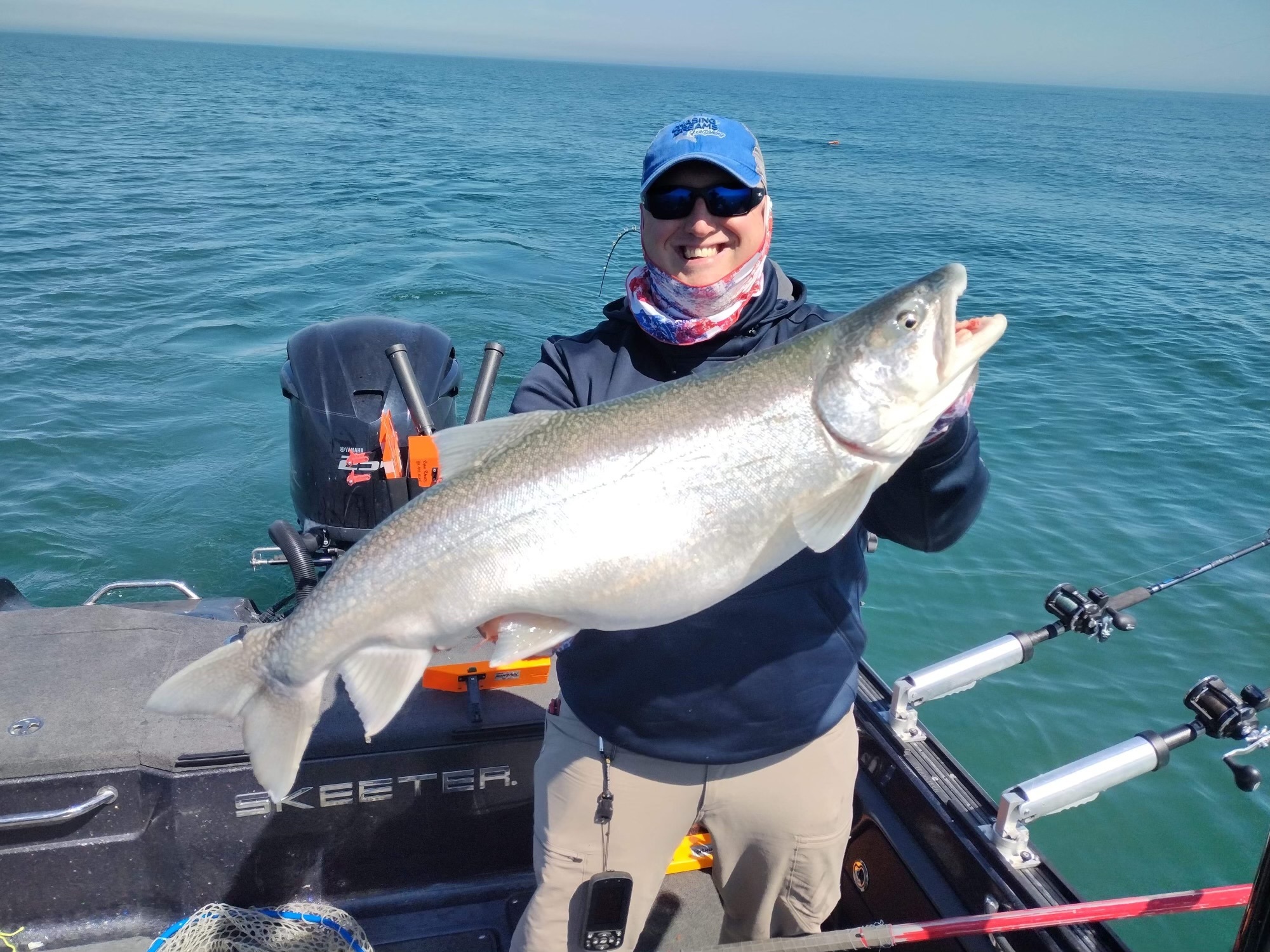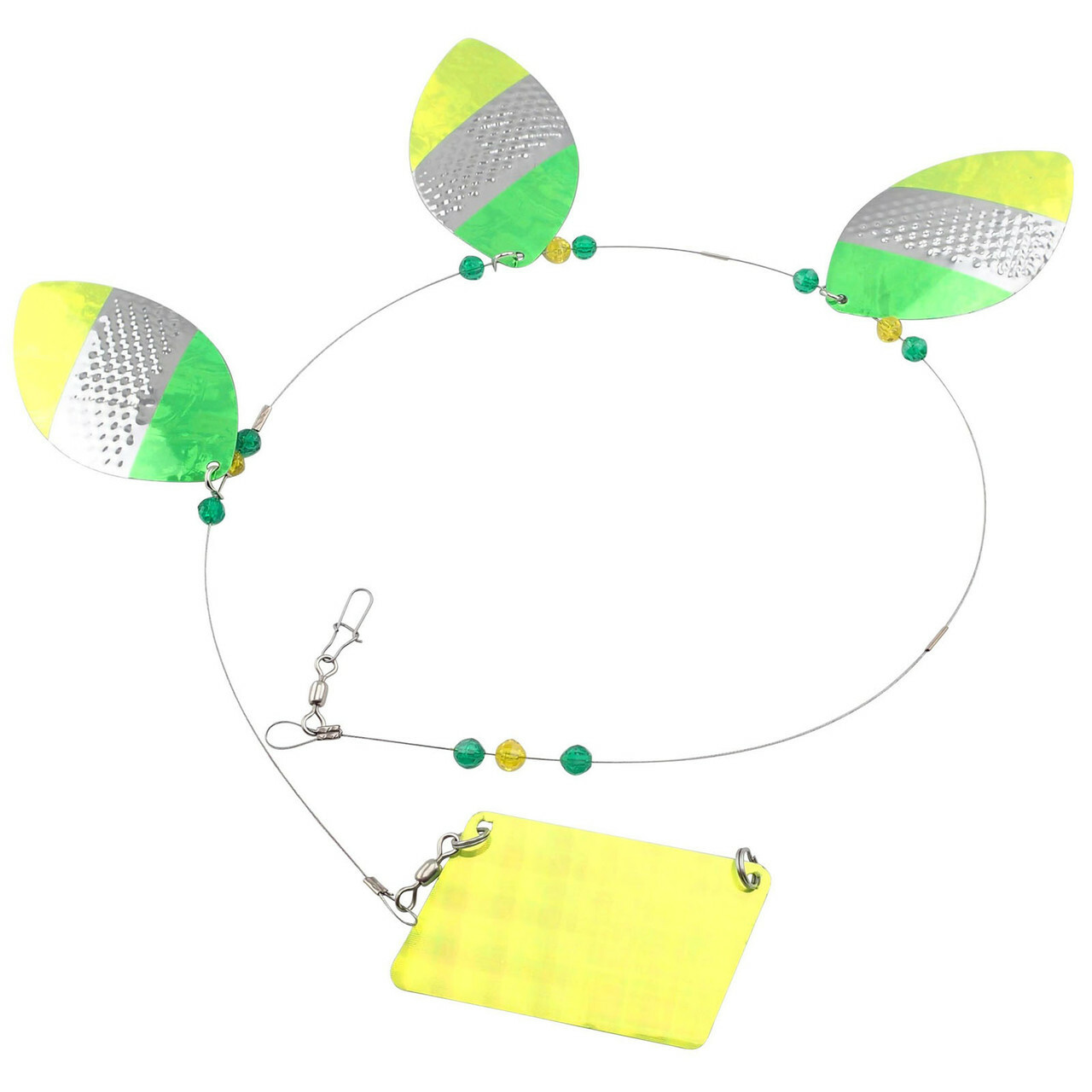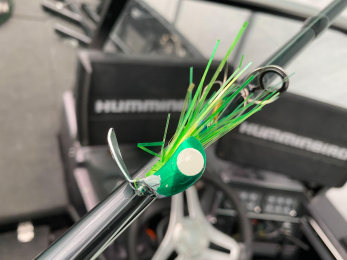How To Troll For Lake Erie Lake Trout
Table of Contents
What Is a "Lake Trout" Anyway?

A healthy specimen from the depths of Lake Erie
When Is The Best Time To Fish For Lake Erie Lake Trout?
How To Catch Lake Erie Lake Trout
Attractors

Hammerhead Cowbells are a staple for Lake Erie lakers
Spinners

Green color variations are deadly for Lake Trout
Spoons
My Top Three Lake Trout Trolling Setups
1. Downriggers
2. Inside Dipsy Divers
3. Outside Diver Rods

The green lines represent the downrigger lines, blue represents inside dipsy rods, and orange represents the outside dipsies

